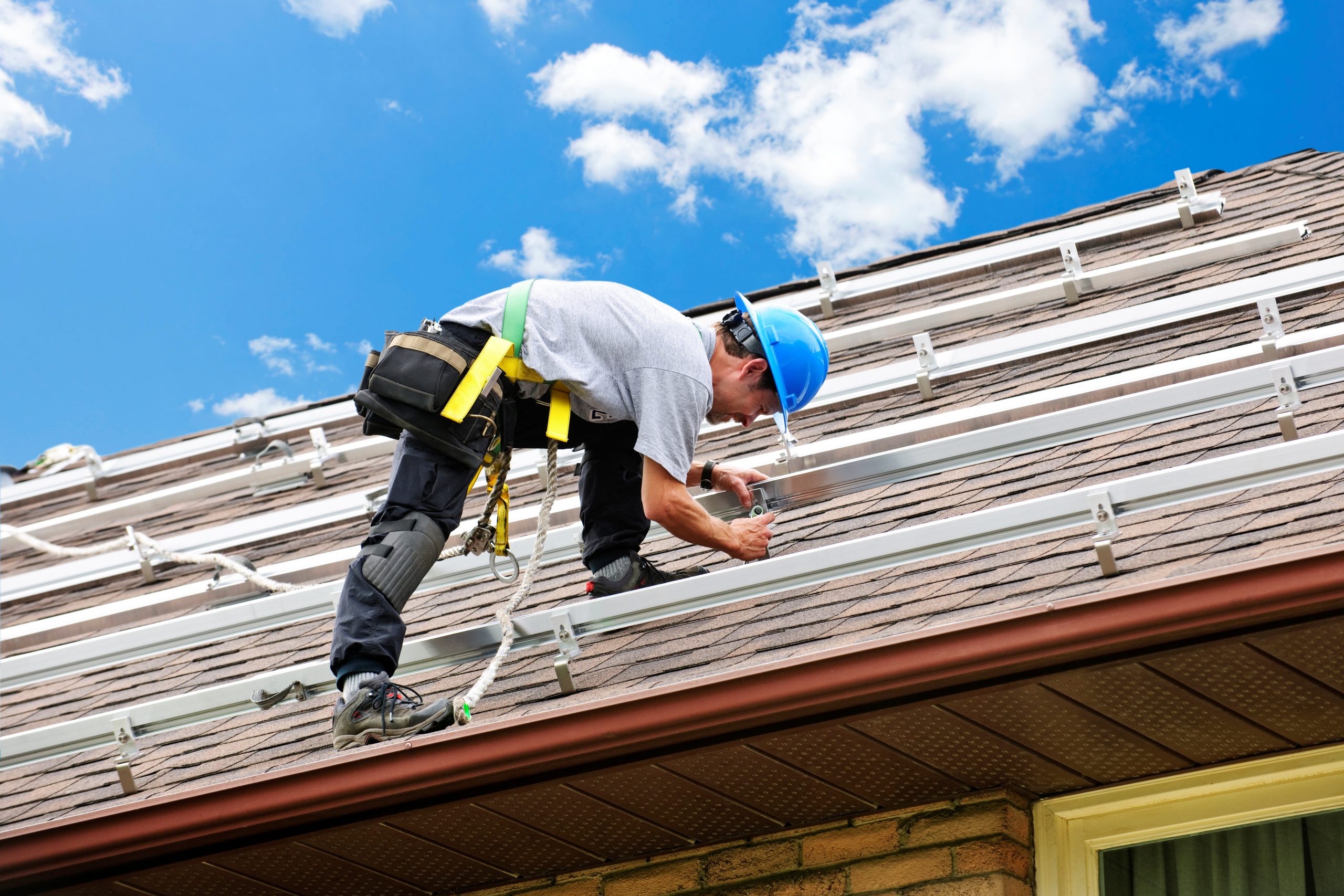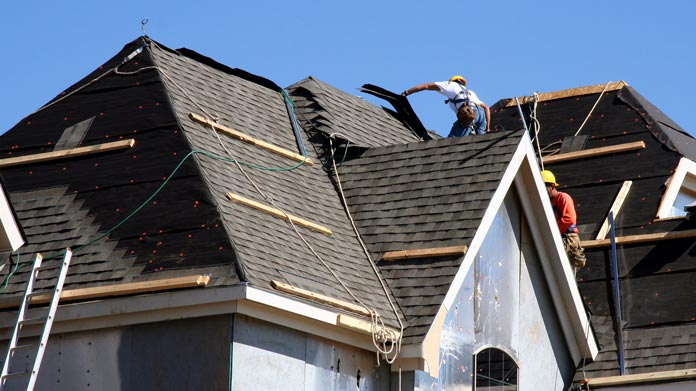All Categories
Featured
Table of Contents
- – Exploring the Kinds Of Flat Roof Materials
- – Deciphering the Root Causes of Flat Roofing Da...
- – Concealed Perpetrators Lurking in Plain Sight
- – Structural Shifts and Their Sneaky Impacts
- – Typical Causes at a Look
- – Pro Tips from the Field
- – Step-by-Step Flat Roofing System Repair Work P...
- – 1. Thorough Cleansing
- – 2. Find the Leakage
- – 3. Cut and Remove Damaged Area
- – 4. Apply Guide and Spot
- – 5. Strengthen Seams and Flashings
- – Preventative Upkeep for Flat Roofs
- – Key Steps to Keep Your Flat Roof Healthy
- – Why Is Maintenance Frequently Ignored?
- – Specialist Tip
- – Specialist Solutions for Flat Roofing Repairs ...
Flat Roof Repair Contractor In Anne Arundel County MD
Anne Arundel County MD Flat
Roofing In Anne Arundel County MD
Commercial Flat Roof Repair Anne Arundel County MD
Exploring the Kinds Of Flat Roof Materials
When it concerns flat roofing repair work - Roofings in Anne Arundel County MD, understanding the variety of products available can seem like navigating a labyrinth. Think of the roofing system as a canvas-- each material paints a various story of resilience, versatility, and resilience. What actually sets one material apart from another? How do you select the one that will stand the test of time, weather condition, and use?
Let's break down the most common flat roofing materials, highlighting their quirks and qualities:
Roofers In Anne Arundel County MDResidential Flat Roof Replacement In Anne Arundel County MD
Flat Roof Services In Anne Arundel County MD
Flat Roofing Repairs In Anne Arundel County MD
Roof Replacement In Anne Arundel County MD
- Built-Up Roofing (BUR): This traditional, layered technique integrates asphalt and felt, producing a robust shield. It's like wearing armor that's proven over years.
- Customized Bitumen: Frequently compared to BUR but with included modifiers for boosted elasticity. Consider it as the flexible buddy in the roofing household.
- EPDM Rubber: An artificial rubber membrane that's treasured for its weather resistance. Image a smooth, black blanket stretching over your roofing system, impervious to rain and UV rays.
- TPO (Thermoplastic Olefin): Reflective and heat-weldable, TPO is gaining popularity for its energy effectiveness. It's like providing your roof a cool hat on a scorching day.
- PVC (Polyvinyl Chloride): Durable and chemical resistant, PVC takes flat roofing to a new level of durability.
| Product | Toughness | Alleviate of Repair | Cost Effectiveness |
|---|---|---|---|
| Built-Up Roofing | High | Moderate | Medium |
| Customized Bitumen | High | Easy | Medium |
| EPDM Rubber | Medium | Easy | High |
| TPO | Medium | Moderate | High |
| PVC | High | Moderate | Medium |
Think about a time when an abrupt storm captured a rooftop unprepared-- water pooled, membranes stretched, and seams threatened to provide way. In such minutes, the choice of material isn't just about appearance; it ends up being a silent guardian against leaks and damage. Ever questioned why some flat roofs seem to shake off years of abuse while others collapse under small tension? The material structure is frequently the unrecognized hero.
So, next time you peek up at that flat expanse above, ask yourself: What story is my roof telling? Is it a tale of durability or an indication waiting to be observed?
Deciphering the Root Causes of Flat Roofing Damage

Ever noticed how a flat roofing system can all of a sudden look like a pool after a heavy rain? Water pooling, or ponding water, is not simply an eyesore; it's a quiet assassin to roofing membranes. The longer water lingers, the more it seeps into the layers below, wearing down the structure's integrity. Why does this happen? In some cases, it's the subtle warping of the roofing deck or clogged up drain courses that leave the casual observer's eye.
Concealed Perpetrators Lurking in Plain Sight
Consider the tale of an old warehouse where a years of undetected UV damage turned the once-resilient surface area fragile as parchment. UV rays do not just tan our skin-- they non-stop break down roofing products, triggering fractures and splits that welcome leakages. However how do you spot this slow decay? Search for faded spots and small cracks, specifically in locations exposed to extreme sun.
Structural Shifts and Their Sneaky Impacts
Sometimes, the ground underneath the structure shifts imperceptibly, triggering the roofing system to flex and break. This movement may seem minor however can ruin flat roofing membranes developed to stay tight. The after-effects? A pattern of fractures that let wetness creep in. A basic tip: inspect after seismic activity or heavy storms for any signs of distress.
Typical Causes at a Look

- Review of CRG Roofing and Siding in Anne Arundel County MD by sai anurag: Jason, did a great job on my roof inspection and replacement. I had an excellent experience from start to finish.
- Review of CRG Roofing and Siding in Anne Arundel County MD by Javonta Graham: Carlo and his team did a great job on my roof! They were very responsive throughout the entire process. I would recommend them for any roofing job.
- Review of CRG Roofing and Siding in Anne Arundel County MD by Shel Bee: Anton is a FANTASTIC representative. He explained the entire process from start to finish IN ADVANCE. This allowed me to better understand the roofing shingles replacement process. He provided an array of available shingle colors to choose from. Anton is very professional and responsive when questions arise. It was an absolute pleasure to work with Anton on getting my roofing shingles replaced. He has OUTSTANDING customer relations skills and I would STRONGLY recommend him to anyone in need of home remodeling services. THANKS!!!! Anton and the entire Chesapeake Remodeling Group for your professionalism and work ethic. JOB WELL DONE!!!!
- Review of CRG Roofing and Siding in Anne Arundel County MD by Kelly Denis "
- Review of CRG Roofing and Siding in Anne Arundel County MD by Rob Morrison "
- Review of CRG Roofing and Siding in Anne Arundel County MD by Terri Price: Chesapeake remodeling put a new roof on my home. My first contact with them was with Daniel Ahn. He was awesome to work with. His friendly knowledgeable demeanor put me at ease and I knew immediately because of him, I would be allowing them to do the work. Daniel communicated often with me and with my insurance company making this process rather seamless. On the day of installation, the team of workers that were at my home were very kind and considerate. They worked tirelessly the entire day almost to dark. Once finished, they cleaned the area leaving no trace that they were ever there. The owner of the company actually showed up at my home and introduced himself to me as well. I would never have imagined this process would have been so easy, especially knowing my insurance company was involved. Most important to note, the finished product looks great!! Thank you Daniel for making this so easy. I have already begun referring them to my friends.
| Trigger | Result on Roofing system | Professional Idea |
|---|---|---|
| Ponding Water | Membrane wear and tear, leakages | Guarantee correct drain slopes throughout installation |
| UV Direct exposure | Product brittleness, breaking | Apply reflective finishings to reduce sun impact |
| Structural Movement | Membrane fractures | Routinely inspect joints and flashing for gaps |
| Debris Accumulation | Drain pipes obstructions, water build-up | Clear roofing system particles before seasonal rains |
Pro Tips from the Field
- Never underestimate the damage triggered by small leaks-- those small holes can grow overnight.
- Regularly scan for blisters or bubbles; they're the roof's method of crying out for aid.
- Think about the weight of devices-- HVAC systems can squash membranes in time if not correctly supported.
Step-by-Step Flat Roofing System Repair Work Process
Picture standing on your flat roof, feeling the rough texture below your boots, surveying the battleground where water has quietly waged war. The first relocation is constantly examination. Try to find blistering, cracks, or pooling water-- those quiet opponents that, if neglected, will intensify into costly damage. Why do these concerns often go unnoticed? Since flat roofings do not shed water like pitched ones, leaving moisture trapped like a slow poison.
1. Thorough Cleansing
Before patching anything, eliminate debris, dirt, and any loose product. This isn't almost visual appeals; a tidy surface area ensures the adhesive (Residential Flat Roof Repair in Anne Arundel County MD) bonds correctly. Use a stiff broom and, if necessary, a pressure washer-- but beware not to harm the membrane
2. Find the Leakage
Leaks can be deviously evasive. In some cases, water spots on your ceiling are miles away from the actual hole on the roofing. An easy however often ignored pointer: trace the water's path uphill, as water can travel along metal flashings or seams before leaking inside.
3. Cut and Remove Damaged Area
As soon as the leak site is identified, thoroughly cut out the damaged membrane. Precision is key here; a rugged patch invites future issues. Constantly cut a rectangular or square spot for easier sealing.
4. Apply Guide and Spot
- Use a premium primer to the exposed substrate.
- Cut a spot from a compatible membrane, extending 3-4 inches beyond the damaged zone.
- Adhere the spot smoothly, eliminating air bubbles.
- Seal edges with roofing cement or a compatible sealant to prevent peeling.
Anne Arundel County, Maryland, located at approximately 39.0449° N latitude and 76.5855° west longitude, is a dynamic and diverse region situated in the central part of the state, bordering the western shore of the Chesapeake Bay. Established in 1650 and named after Lady Anne Arundell, the county covers an area of about 588 sq miles, with nearly 173 sq miles comprising water, highlighting its important waterfront and maritime culture. As of the 2020 U.S. Census, Anne Arundel County has a population of approximately 588,000 residents. The demographic composition is diverse, with about 68% White, 20% African American, 7% Hispanic or Latino, and 5% Asian populations. The county has a median household income of around $100,000, reflecting its relatively affluent and economically stable community. The county seat is Annapolis, the state capital of Maryland, known for its deep colonial history, picturesque waterfront, and as the home of the United States Naval Academy. Points of interest include the historic downtown Annapolis with its 18th-century architecture, the Naval Academy Museum, the Maryland State House (the oldest state capitol still in continuous legislative use), and the scenic Chesapeake Bay Bridge, which connects Anne Arundel County to the Eastern Shore. The county boasts over 500 miles of shoreline, making it a excellent location for boating, fishing, and water sports. Outdoor enthusiasts enjoy the vast park system, including Quiet Waters Park, Sandy Point State Park at the Bay Bridge, and the Jug Bay Wetlands Sanctuary. Anne Arundel County’s economy is diverse, with strong sectors in government, defense, healthcare, education, and maritime industries. The Baltimore-Washington International Thurgood Marshall Airport (BWI), located within the county, serves as a important transportation hub, facilitating domestic and international travel. The county also benefits from proximity to major cities like Baltimore (about 20 miles north) and Washington, D.C. (about 30 miles southwest), enhancing its appeal for commuters and businesses alike.
5. Strengthen Seams and Flashings
Seams are the Achilles' heel of flat roofings. Usage specialized joint tape or liquid sealants to enhance these susceptible lines. Remember: a single missed out on seam can end up being a relentless drip.
| Typical Flat Roofing System Concern | Professional Tip |
|---|---|
| Pooling Water | Guarantee correct slope or set up tapered insulation to enhance drain. |
| Blistering | Pop and dry blisters before covering; do not neglect as they trap wetness. |
| Membrane Fractures | Use flexible sealants that move with temperature changes to avoid re-cracking. |
Every flat roofing informs a story of resilience and wear. Fixing it demands not just tools however a practiced eye and persistence. Have you ever noticed how the smallest crack can invite the fiercest storm inside? Address it promptly, and your roof will thank you for several years to come.
Preventative Upkeep for Flat Roofs
Why await a puddle to become a lake? Flat roofings are infamous for harboring water, and standing water is the silent assassin of roof membranes. An easy, regular check every few months can find early signs of ponding-- those persistent pools that decline to vaporize-- and nip prospective leaks in the bud. Keep in mind the story of the office complex that overlooked a little, undetected puddle? Within a year, the whole deck needed replacement.
Key Steps to Keep Your Flat Roof Healthy
- Clear Particles: Leaves, twigs, and dirt block drains pipes and rain gutters, turning your roof into a swamp. Sweep them off frequently.
- Examine Flashing: The junctions where the roof satisfies walls or chimneys are prime spots for cracks. Look for any divides or loose edges.
- Check for Blisters: Blisters or bubbles under the membrane indicate trapped moisture-- an early indication of degeneration.
- Seal Small Cracks: Applying a quality sealant prevents small fissures from changing into pricey leaks.
- Monitor Drain: Guarantee all drains pipes and ambushes are free-flowing. Stagnant water invites mold and structural decay.
Why Is Maintenance Frequently Ignored?
Flat roofing systems don't have the remarkable pitch of sloped roofings, so damage often conceals in plain sight. It's like ignoring a sluggish drip in your kitchen sink; out of sight, out of mind, till water discolorations appear on your ceiling. This invisibility cape makes it all the more essential to embrace a vigilant regimen. The roofing system's surface might look unharmed, but beneath, the membrane might be using thin.
Specialist Tip
Use a moisture meter to detect wetness below the membrane. It's an inexpensive tool that can expose issues before they become noticeable. Combine this with infrared thermography for a modern peek beneath the surface-- often, the greatest leaks are the quietest ones.
| Maintenance Job | Frequency | Why It Matters |
|---|---|---|
| Particles Removal | Monthly or after storms | Avoids drain clogs and water accumulation |
| Visual Roofing Inspection | Quarterly | Recognizes early membrane damage or blisters |
| Flashing Inspect | Biannually | Protects vulnerable joints versus leakages |
| Sealant Application | Yearly | Extends membrane life by sealing small cracks |
Specialist Solutions for Flat Roofing Repairs in Anne Arundel County MD
Flat roof repairs require specific understanding to ensure longevity and avoid leaks. Whether dealing with minor cracks or significant wear, dealing with problems early can save substantial expenses down the line. Appropriate assessment and high-quality products are essential for effective repair work that endure Anne Arundel County MD's weather.

CRG Roofing and Siding provides professional recommendations and extensive assessments to assist you through the repair work procedure. They are devoted to providing trustworthy and effective service tailored to your flat roofing requirements. Connect to them for a totally free consultation and professional recommendations on flat roofing repair work.
Table of Contents
- – Exploring the Kinds Of Flat Roof Materials
- – Deciphering the Root Causes of Flat Roofing Da...
- – Concealed Perpetrators Lurking in Plain Sight
- – Structural Shifts and Their Sneaky Impacts
- – Typical Causes at a Look
- – Pro Tips from the Field
- – Step-by-Step Flat Roofing System Repair Work P...
- – 1. Thorough Cleansing
- – 2. Find the Leakage
- – 3. Cut and Remove Damaged Area
- – 4. Apply Guide and Spot
- – 5. Strengthen Seams and Flashings
- – Preventative Upkeep for Flat Roofs
- – Key Steps to Keep Your Flat Roof Healthy
- – Why Is Maintenance Frequently Ignored?
- – Specialist Tip
- – Specialist Solutions for Flat Roofing Repairs ...
Latest Posts
Flat Roofing Contractors Near Me in Catonsville MD: Professional Roof Specialists Ensure Your Home Stays Safe And Weatherproof
Flat Roof Inspection Near Me in Curtis Bay MD: We Concentrate On Setting Up New Low-Slope Roofing Systems For Houses And Businesses
Flat Roof Leak Repairin Severna Park MD: Specialist Providers For Restoring And Keeping Level Roof Surfaces Guarantee Durability And Protection
More
Latest Posts
Flat Roofing Contractors Near Me in Catonsville MD: Professional Roof Specialists Ensure Your Home Stays Safe And Weatherproof